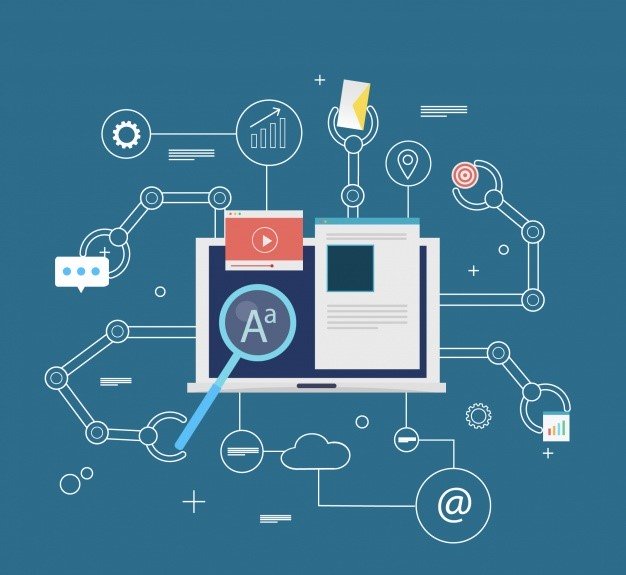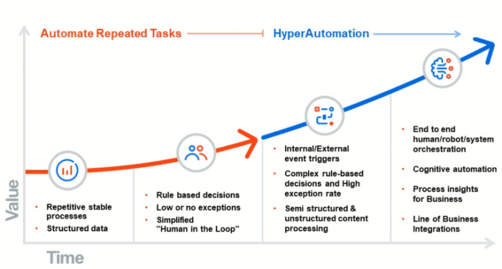
Hyper Automation
Hyper Automation

Hyperautomation is the application of advanced technologies like Artificial intelligence (AI) and Machine learning (ML) to automate processes in ways that are significantly impactful more than that traditional automation capabilities. As no single tool is capable enough yet to replace humans, the idea of hyperautomation is to involve multiple tools like robotic process automation (RPA), intelligent business management software, AI and other advanced tools, with the goal of increasingly AI-driven decision making. It’s the next step beyond RPA, further replacing human involvement in physical and digital tasks, and eventually the complete decision-making process. Hyperautomation often results in the creation of a digital twin of an organization (DTO), allowing them to visualize how it functions, processes and key performance indicators interact to drive value.
The flavors of automation:
Robotic Process Automation
Robotic Process Automation is a tool to automate routine business processes and enhancing manual capabilities. It takes the robot out of the human. However, it cannot replace human abilities. Instead, it adds a component to human-operated productions. It helps human performance in manual data entry. Most of the repetitive and time-consuming tasks can be done through RPA. Any forms of data can be organized effectively. RPA is mainly used for large organizations that utilize human effort on a large scale to process the data effectively. Automation may include data processing, interaction between different digital systems, etc. Data processing can be done efficiently through RPA. Machine learning models can be used in RPA workflows to perform machine perception tasks, like image recognition, tasks that the human brain can perform in a second, whose output can be plugged into a larger flow of business logic.
Machine Learning
Machine Learning (ML) can be referred to as automating and improving the learning process of computers, based on their experiences without being actually programmed i.e. without any human assistance. Machine learning mainly focuses on the development of computer programs that can access data and use it to learn for themselves. Machine Learning algorithm is trained using a training data set to create a model. When new input data is introduced to the ML algorithm, it makes a prediction based on the model. Here sentiment analysis plays a major role in Machine learning, where automatically transforms the unstructured information into a structured data of public opinion about the products, service, brand or any other topic that people can express opinions about. This data can be very useful for commercial applications like marketing analysis, public relations, product review, net promoter scoring, product feedback, and customer service.

Hyperautomation
Use case:
In this fast-moving world, enterprises face different challenges to retain their customers. Because of the huge competition businesses are adopting different strategies to retain their customers. It is always easy to retain customers than acquiring one. Businesses are trying to understand their social media presence as it has become a common platform for users to share their feedback about a brand. Currently, acquiring data from different social media is a challenge because data might come in different forms. RPA plays a major role in acquiring the data and converting them into a structured manner. In turn, the resulting data will be processed and analyzed with the help of advanced data pre-processing techniques and Machine Learning.
Solution:
In the fast-growing world, where we generate millions of data every day, sentiment analysis has become a key tool for making sense of that data. This tool mainly used to get key insights and automate all kinds of processes. With the help of sentiment analysis systems, this unstructured information could be automatically transformed into structured data of public opinions about products, services, brands, politics, or any topic that people can express opinions about. These data can be used for commercial applications like product reviews, product feedback, and customer service. Sentiment analysis allows processing data at scale in an efficient and cost-effective way.
Customer Benefits:
With the help of this solution, Businesses can understand how well they are performing on different social platforms as well as how they perform against their competitors. They can also make use of this solution to improve their products with the help of customer's feedback. They can make use of insights to make business-driven decisions.
Leave your thought here
Your email address will not be published. Required fields are marked *